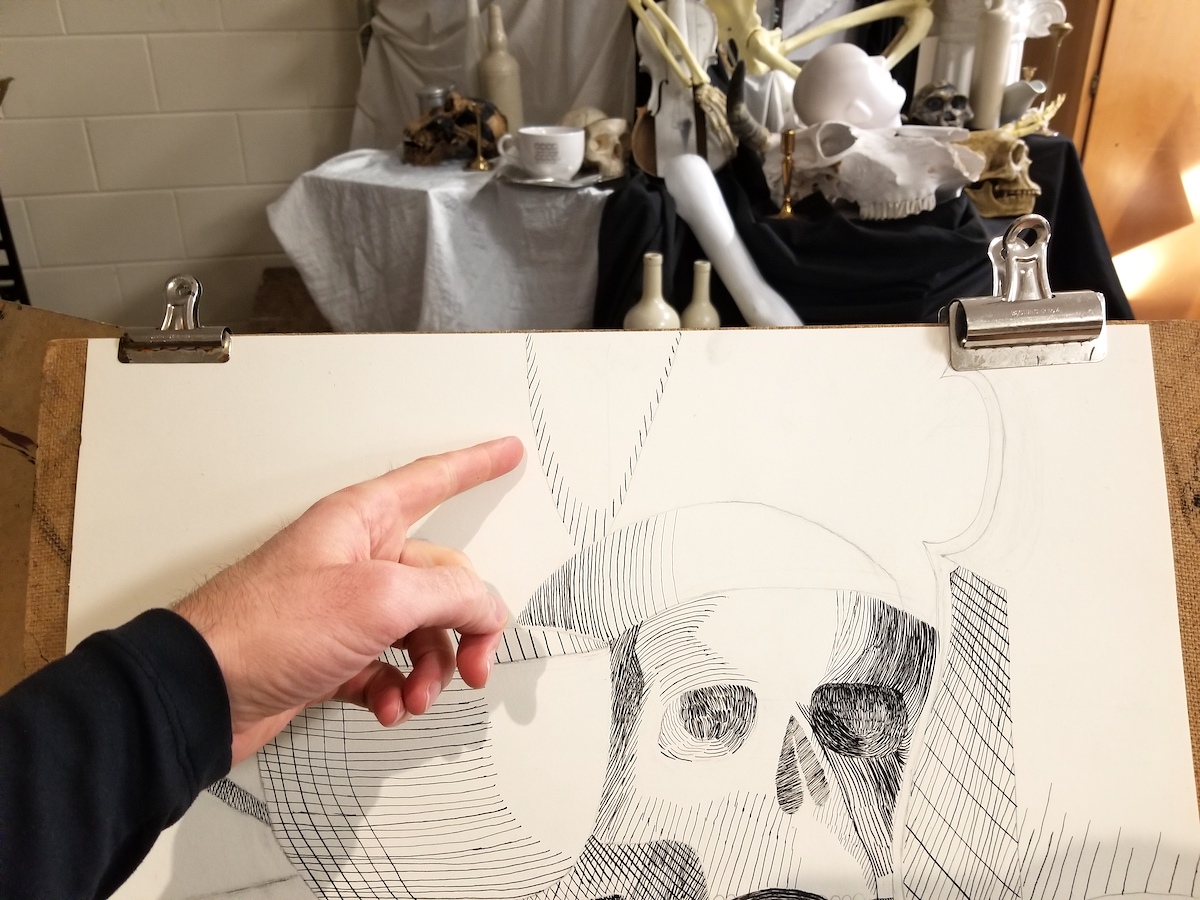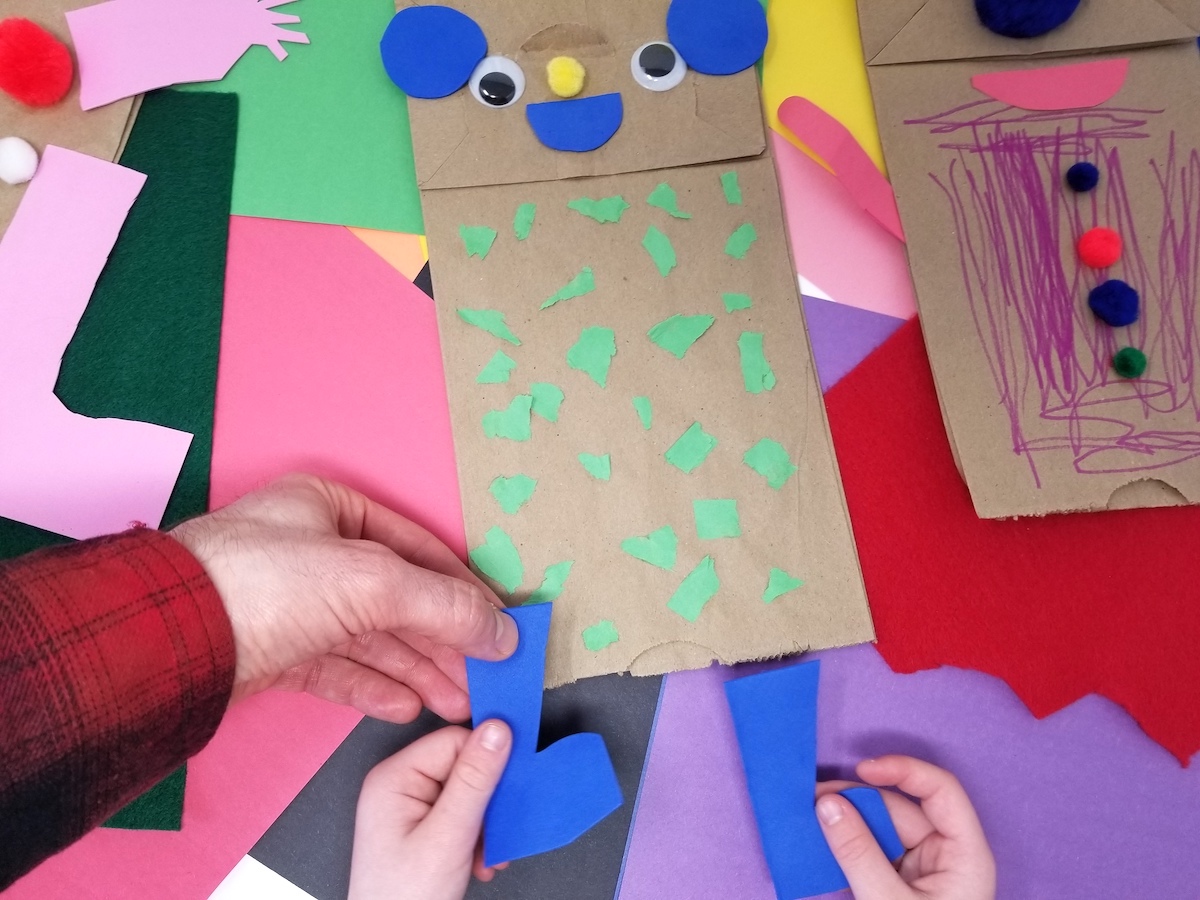As an art teacher, you spend the majority of your time in the classroom giving feedback. If you add up the number of minutes you spend having conversations with students about their artwork, it easily outweighs other aspects of the classroom. So reflecting and learning about ways to give more effective feedback is a smart investment in your development and can have a significant impact on your teaching and student progress.
Giving great feedback is more than telling students what they need to do next with their piece. It’s also not about giving procedural directions or logistics. Giving feedback is a multi-step process that includes the student’s perspective, instruction, and a clear direction for moving forward with their work. Review the parts below to giving perfect feedback and be ready to have more effective conversations with students.

1. Start by doing your research.
When a student raises their hand and asks about their piece, the process for giving feedback has started. The first step is understanding where the student is in their thought process. Before you answer or respond to their inquiry, try one of these simple responses to learn what the student has already considered:
- What solutions have you thought about so far?
- What have you tried so far?
- Why do you think it’s not working?
These kinds of questions reinforce a level of independence and expectation, encouraging the student to reflect and develop their own thoughts and ideas before asking you. Perhaps you expect them to actually make some attempts and fail before reaching out. Knowing what’s in their head also allows you to build on their ideas to better involve them in the process. Similarly, knowing what students have tried prevents you from giving a solution that has already failed in their minds. Sometimes students might not be able to articulate their desire, and they start with something vaguer like, “I just don’t like it.” At this moment, the goal of doing your research is still the same, and you can use questioning to help the student identify what they specifically don’t like and are trying to accomplish.

Creating opportunities to hear from students first and fully understand their thought process takes time, and sometimes you might not feel you have that time. Just remember, helping students to become more independent can save you time in the future. Without fully understanding the student’s thought process, you run the risk of your feedback, causing more harm than good. Students can feel overwhelmed when too much feedback is provided, or confused when they think the feedback contradicts their goals. Overall, your understanding of where the student is will help you tailor your feedback to be more specific and helpful.
A program optimized for working teachers: Learn more about our Master’s Degree
2. Carefully consider your response.
Now that you’ve fully heard the student, it’s your turn to talk. Each point of feedback should follow a three-part sequence that includes the why, what, and how. Start by sharing or repeating the “why” for what they’re trying to accomplish. This is the larger artistic goal or purpose. Then, support the why with what they need to do to the piece. This is the artistic concept. Last, and the most often forgotten piece, is the “how.” Technically, share how the student should create the change.

For example, a student shares they don’t like their piece. So you probe further and learn the student thinks the figure’s face isn’t grabbing the viewer’s attention, and it’s supposed to be the focal point. Your response could be something like, “In order for the face to become more prominent (the why), you could try increasing the range of values (the what), by pressing harder with your pencil and adding some darker values around the eyes and under the bottom lip (the how).” With each of these components, you’ve now given the student direction and a purpose to move forward.
3. Check for understanding.
Ensuring the student fully understands your response is critical to their success. Just like any form of communication between two people, there can be assumptions, lack of clarity, varying interpretations, etc. And all of those could lead to frustration and poor decisions that, ultimately, negatively impact the student’s art piece. So before you head to the next student, check for understanding. Try to avoid the typical approaches like, “Does that make sense?” or “Do you know what I mean?” These questions are too easily answered and don’t really tell you the student understands. Some students will simply respond, “Yes,” because they are fatigued or insecure and want the conversation to end.
Many students have learned that if they just nod and say yes, a conversation with a teacher will end really quickly. Even if a student legitimately does think they understand, there is still the potential for misinterpretations or misunderstandings. So instead of those typical approaches, try asking students, “Okay, so what are you going to do?” Or, “What are the next three things you are going to do and why?” Allow the student to explain everything to you to ensure you’re leaving them in a good place, and you’ll come back to the piece with improvements made.
Everything described in giving effective feedback takes time. Sometimes it feels like there isn’t any time to give with increasing class sizes, demands, and more needs in the classroom. It’s also quicker to give students an immediate response and solution to their first question. While that might feel more efficient and allow you to get to more students in a day, it creates an environment where the students are reliant on you, and they’ll keep coming back each time. Using questioning through dialogue can help students become more independent artists and develop the skills necessary to self-critique and analyze their own work. Those skills will keep their hands down the next time because they’ve resolved the issue on their own. So, spend now and save later!
Are there any ways technology can help us give more feedback efficiently?
How can we help students accept feedback?
Magazine articles and podcasts are opinions of professional education contributors and do not necessarily represent the position of the Art of Education University (AOEU) or its academic offerings. Contributors use terms in the way they are most often talked about in the scope of their educational experiences.





